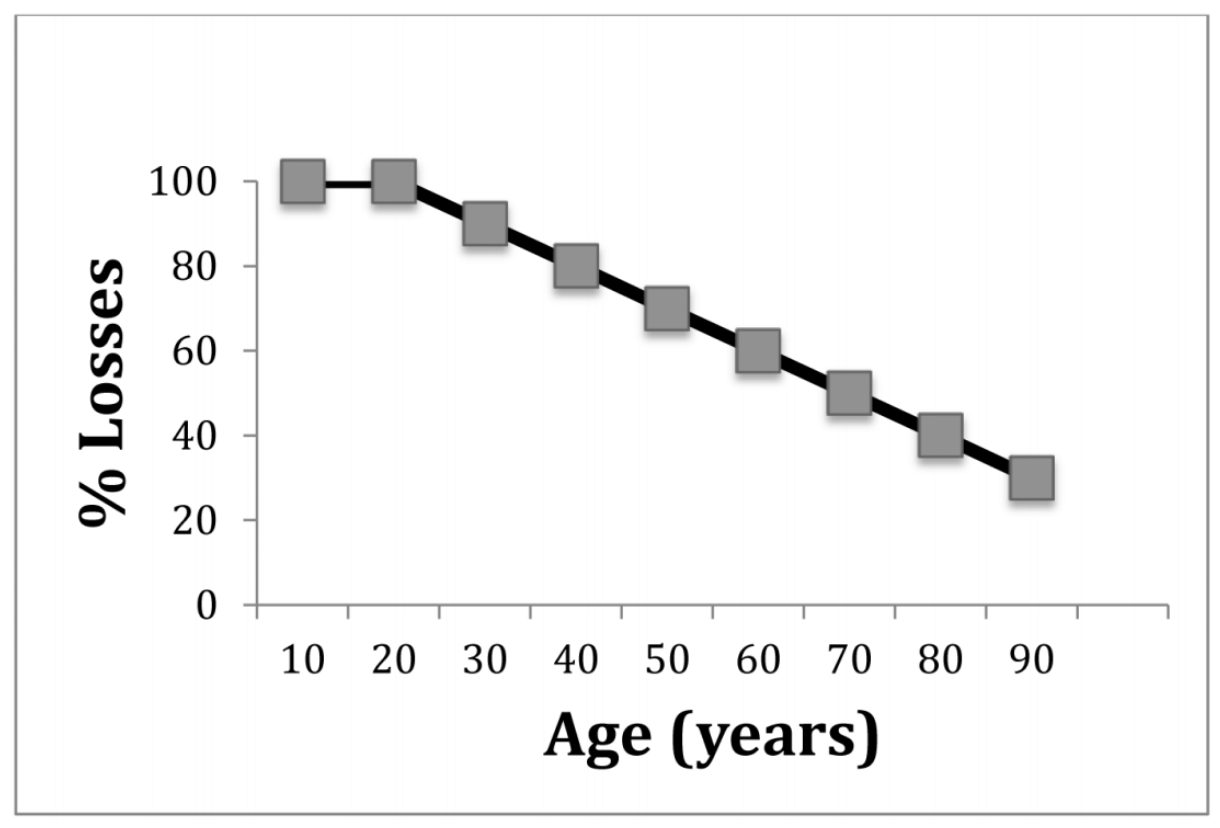Exercise-Ageing
Age-Related Losses in Cardiovascular Muscle Mass and Contraction Strengths06/17

For example, any loss in heart muscle contraction strength reduces the volume of blood pumped out of the heart during each contraction cycles. And any loss in smooth-muscle contraction strength decreases the ability of the blood vessels to transport adequate blood volumes into and out of active muscle cells. This minimizes the amount of blood oxygen and glucose (essential, energy-producing nutrients) transported to the heart and skeletal muscle cells – and allows metabolic fatigue products (CO2 , lactic acid, and heat) to build up in these muscles and bring about the premature onset of performance fatigue.
In summary, the age-related cardiovascular muscle losses shown in Figure 1 result in a progressive decrease in the maximum transport capacity of your heart and blood vessels, and limit your functional ability to perform your daily activities. So in your later years, you become out of breath (fatigued) when you climb a flight of stairs, walk around the block, or attempt to perform other oxygen demanding activities. This cardiovascular-functional decline discourages ageing seniors from enjoying a healthful exercise lifestyle.
The cause for the above-described losses in cardiovascular muscle contraction strength is the muscle-fiber atrophy resulting from the "disuse" of these muscles associated with sedentary lifestyles. For you see, cardiovascular muscles, like skeletal muscles, need to experience a daily-exercise stress in order to prevent the premature onset of cardiovascular muscle-tissue atrophy and the associated decline in maximum- oxygen capacity needed for physical activity performances.
To prevent age-related, cardiovascular-muscle atrophy and the associated decline in maximum-oxygen capacity, sedentary-inclined seniors need to initiate and adhere to an exercise lifestyle that includes an effective cardiovascular training program. This program should provide the work out intensity and duration needed to prevent the untimely loss of cardiovascular muscle tissue and maintain the muscle contraction strength of the heart and blood vessels – making it possible to perform your daily activities without fatiguing, throughout your senior years.
Age-Related Physiological Benefits of Exercise
- Maintains and regenerates skeletal muscle mass and contraction strength and helps prevent premature losses in body balance, bone density, and the inability to perform your daily-living activities
- Maintains and regenerates cardiovascular muscle contraction strength and helps prevent premature losses in blood volume output of the heart, blood flow to active muscle tissues, maximum attainable heart rate, and aerobic endurance capacity
- Maintains resting calorie utilization in postural muscles and helps prevent the premature onset of obesity
- Helps reduce age-related increases in LDL – your bad cholesterol fraction
- Helps prevent age-related losses of HDL – your good cholesterol fraction
- Helps prevent the premature onset of high blood pressure, excess body fat, diabetes, and other select degenerative diseases
- Helps in maintaining a virtuous-exercise lifestyle compelling a state of happiness throughout your later years